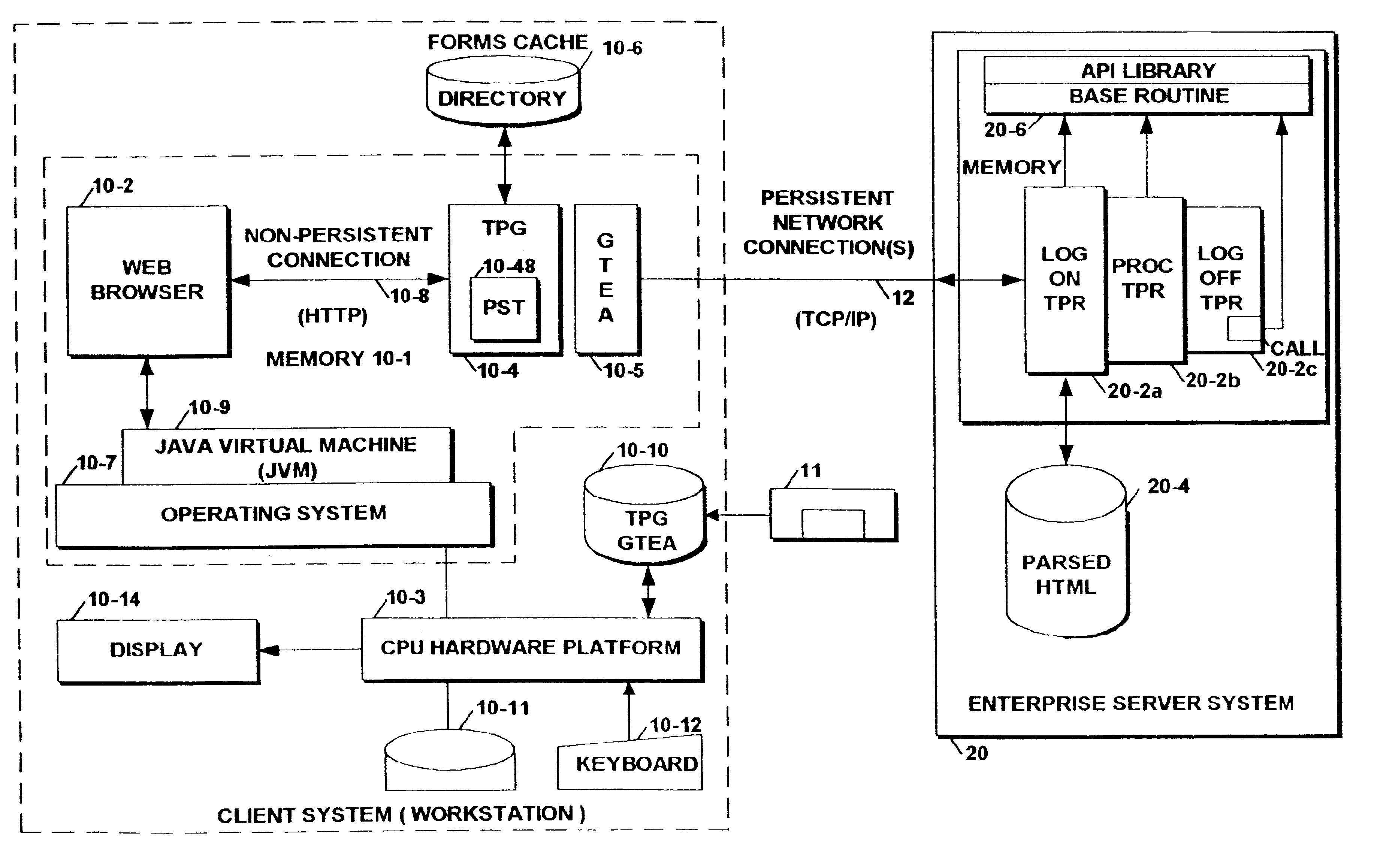Method and system for providing high performance Web browser and server communications
a web browser and server technology, applied in the field of providing high-performance web browser and server communications, can solve the problems of not offering acceptable performance, throughput and response time in a high-volume transaction environment, and still being quite time-consuming and only performant, and wasting time in establishing additional connections
- Summary
- Abstract
- Description
- Claims
- Application Information
AI Technical Summary
Benefits of technology
Problems solved by technology
Method used
Image
Examples
Embodiment Construction
FIG. 3a--Gateway Request Processing Logic
FIG. 3a illustrates the logic of component 10-40. As shown, component 10-40 using its listening function, listens for input connection requests from browser component 10-2 on the configured port (i.e., block 10-40a). For each browser request accepted, component 10-40 examines the request's URL to determine if it contains a session context (SC) value (i.e., block 10-40b). Next, as indicated in block 10-40c, the component 10-40 determines if the SC value equals zero. If the SC value equals zero, this indicates that a session has not been established between the browser component 10-2 and the server system 20 (i.e., "no" path). As indicated in block 10-40c, component 10-40 invokes its connection function to establish a persistent session connection via "sockets". More specifically, component 10-40 first generates a session context (SC) value and "registers" it in one of the locations of PST component 10-48 (i.e., block 10-40c). That is, as indic...
PUM
 Login to View More
Login to View More Abstract
Description
Claims
Application Information
 Login to View More
Login to View More - R&D
- Intellectual Property
- Life Sciences
- Materials
- Tech Scout
- Unparalleled Data Quality
- Higher Quality Content
- 60% Fewer Hallucinations
Browse by: Latest US Patents, China's latest patents, Technical Efficacy Thesaurus, Application Domain, Technology Topic, Popular Technical Reports.
© 2025 PatSnap. All rights reserved.Legal|Privacy policy|Modern Slavery Act Transparency Statement|Sitemap|About US| Contact US: help@patsnap.com



